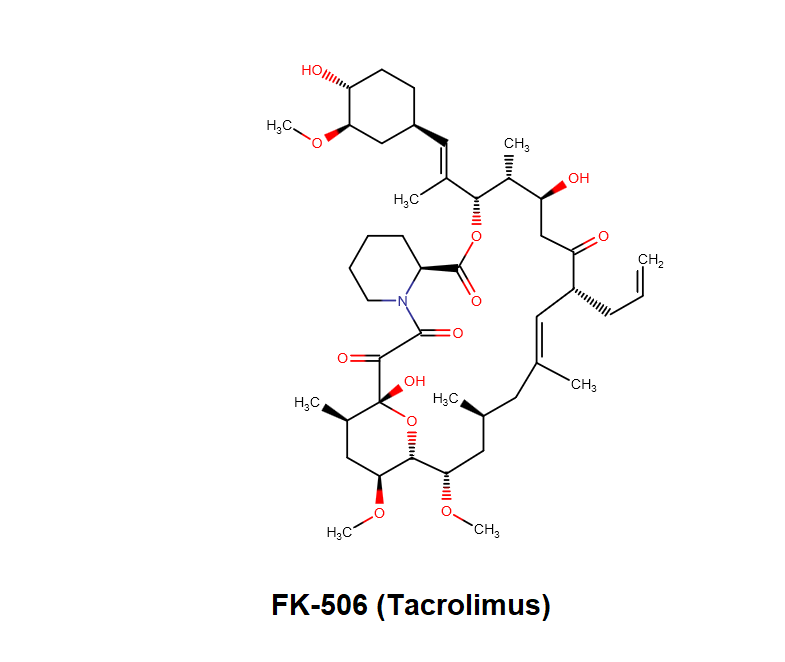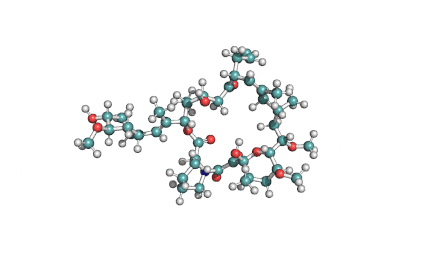Details
Specifications
Chemical identification
Synonyms: FK506, Tacrolimus,
RTECS: KD4200000
FK506 is 23-membered macrolide lactone discovered in 1984, by Kino T, Hatanaka H and Hashimoto M. [reference 2] FK506 exhibits potent inhibitory effect on T- lymphocyte activation. It binds to immunophilins FK506 binding proteins (FKBP-12) and a complex of FKBP-12, calcium, calmodulin and calcineurin is formed, inhibiting phosphatase activity of calcineurin. This prevents dephosphorylation and translocation of nuclear factor of activated T – cells (NF-AT) and inhibits transcription of early T-cell activation gene, Interleukin-2, Tumour Necrosis Factor (TNF-a) and proto-oncogenes; suppressing expression of IL-2 and IL-7 receptor. This results in inhibition of T-lymphocyte activation. FK506 also inhibits the mixed lymphocyte reaction, generation of cytotoxic T-cells and T-cell dependent B-cell activation.
Further Information
FK506 is soluble in Methanol, Ethanol, Acetone, Ethyl Acetate, Diethyl ether, Chloroform, Dicloromethane. FK506 is sparingly soluble in Hexane, Petroleum ether. FK506 is insoluble in water
Chemical classification:
Macrolide
Bioactivity classification
Immunosuppressant
FK506 (Tacrolimus) is used as an immunosuppressant at organ transplantations. For experimental uses of FK506 (Tacrolimus) read also United States Patent Application 20090098200
Composition
Other Fields









